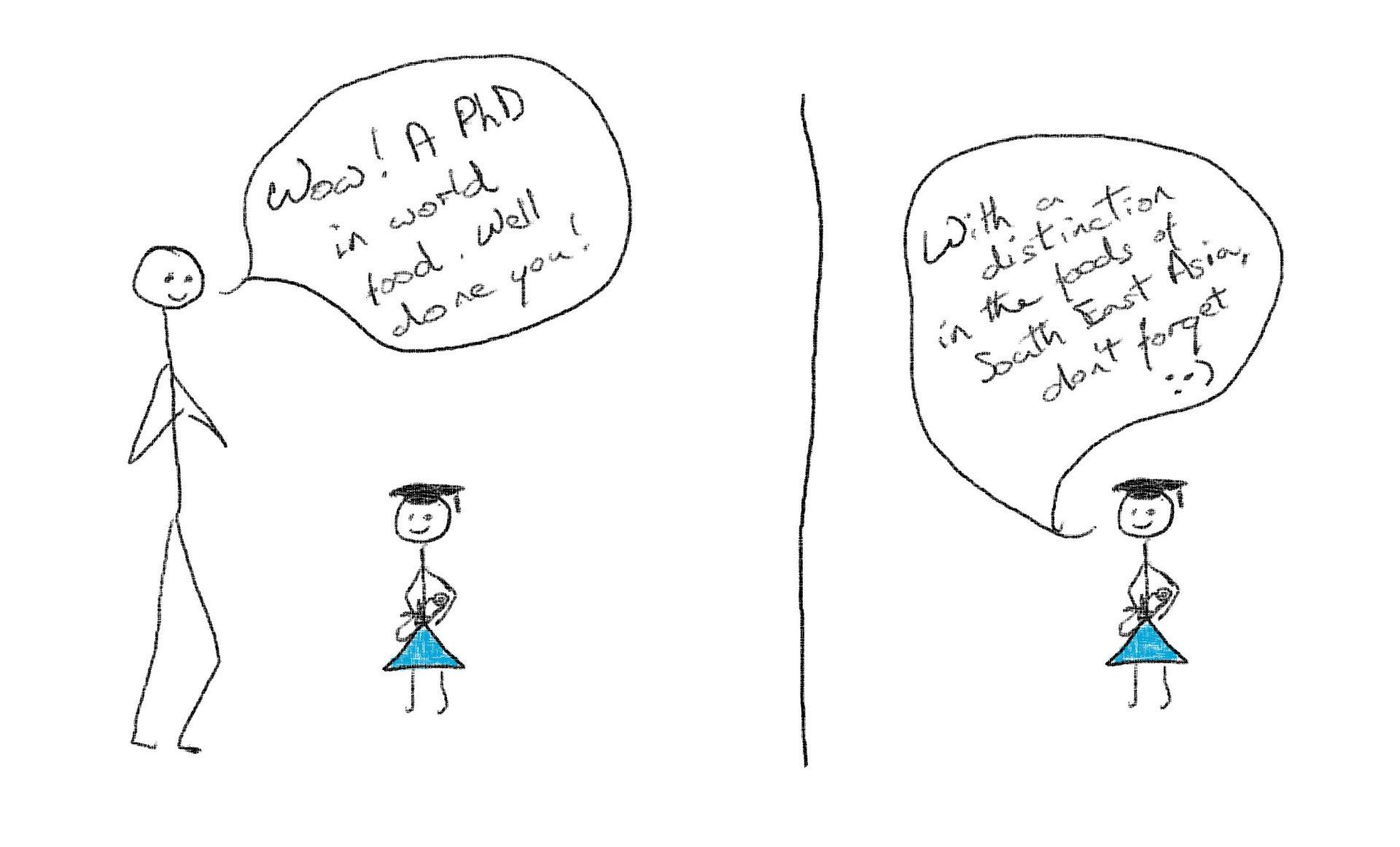
Are You...
Making Mealtimes A Battleground?
A PhD In World Food
Really? At 3?

Chinese, Indian, Mexican, Italian, French... the list goes on and on.
When I grew up in the 60's...
I had to learn about meat and two veg., fish on a Friday, cooked breakfast on a Sunday and leftovers on a Monday.
I loved all of it, with the exception of turnip, swede, beef fat and sprouts.
That was about all there is to say about food in my childhood.
Until, that is, I was a teenager and Mum felt the need to make us a curry (stew with half a teaspoon of dusty curry powder and a handful of raisins) with soggy boiled rice.... yuk! I didn't try Indian food again for a decade.
Go back in history and food would have been the same day in and day out.
Throughout evolution children would have been faced with an even narrower and more restricted diet than I was. It would have consisted of locally sourced seasonal foods prepared in simple ways.
It may have been boring at times, but it would have been relatively easy to learn.
I say relatively easy, but that doesn't make it simple.
To understand the nature of the challenge, let's focus on something seemingly simple - the ubiquitous chicken.
As a child, learning about chicken is actually a highly complex challenge.
Firstly, there's the challenge of what to eat and what not to eat. Chicken is not just meat, there's bones, blood vessels, sinew, cartilage, skin, feather stubs, feet and more besides! Which bit you eat and which bit you don't is not obvious and actually varies from culture to culture.
Next, the meat itself is not uniform. For example, the breast meat is very different from the leg meat.
Then there's the cooking method, fried, roast, boiled, barbecued..
It might come with the bones in, or not, the skin on, or off.
It might have a coating, breadcrumbs, batter, BBQ sauce etc.
It might be over cooked and dry, or moist and tender, or under cooked and pink.
It might be fresh with a delicious smell.
It might be off and very dangerous to eat.
What are those brown bits? What are those dark purple bits? Is that mould or staining from the bones?
All of these things are things you can assess with your eyes. You can learn by watching others eating. You don't need to risk putting it in your own mouth until you're confident you have an idea of what to do.
Once you do you have a whole new level of learning to go through. How it feels in your mouth varies depending on which bit you are eating and how it's been cooked. What's that crunchy bit? Do I chew it or spit it out? This bits moist and fatty, this bits dry and tough.
Even as an adult it can be daunting. I remember my first visit to China. I ate everything from snake to steamed ducks feet, but the chicken was one of the most challenging things to come to terms with. I went out to lunch one day with some of the staff from our Beijing office. We went to a local restaurant where they served simple chicken, yet it was sliced breast meat with the rib bones running through it. It was almost impossible to separate the two. Was I supposed to eat the bones? I watched my hosts carefully for clues, but they seemed reluctant to eat before me. In the end I just had to ask. The answer was yes, you eat the bones... I did, but I wouldn't choose to do it again.
It's a good job children are, in general, highly motivated to learn about chicken!
Now no two meals need every be the same.
In today's world the range of ingredients and cooking methods open to us is simply mind blowing.
Very exciting if you love food and have had years to learn what's safe and what's not, what you like and what you don't.
Totally bewildering if you are a young child trying to learn what is safe to eat.
The wider the choice the more likely you are to restrict yourself to a narrow subset of safe 'beige' foods.
I hate kids menus with a passion, especially now my daughter can read.
Yet I realise that they are an inevitable consequence of modern life.
We can't possibly expect our children to feel comfortable with the range of foods on offer so we have to play it safe and offer them the same restricted menu of safe foods no matter where we eat.
And now we do it at home too. As adults we want to eat all sorts of different things, things we know the kids won't like. So, we prepare simple safe options for them that allow us to eat whatever we choose. How selfish is that?!
I wouldn't mind so much if their safe options were healthy and balanced, but by and large they're not.
That's because, in reality, vegetables are just about the riskiest thing we eat (with the exception of food that's off). Children are naturally more cautious around them. If we were foraging in the wild and didn't know what we were doing we could kill ourselves quite easily.
It takes time to learn about vegetables.
If our children are presented with the same ones in the same way over and over again AND see adults eating them, eventually they learn.
If they are presented with different ones prepared in different ways every day AND never see an adult eating them, they will never learn.
When children are not given the chance to learn about food they stick to the same 'beige' options that they know are safe and when those aren't available at the dinner table they hold out for snacks instead.
Remember, young children do not refuse to eat things just to wind us up!
Created 23/05/2019
Last Updated 24/05/2019

